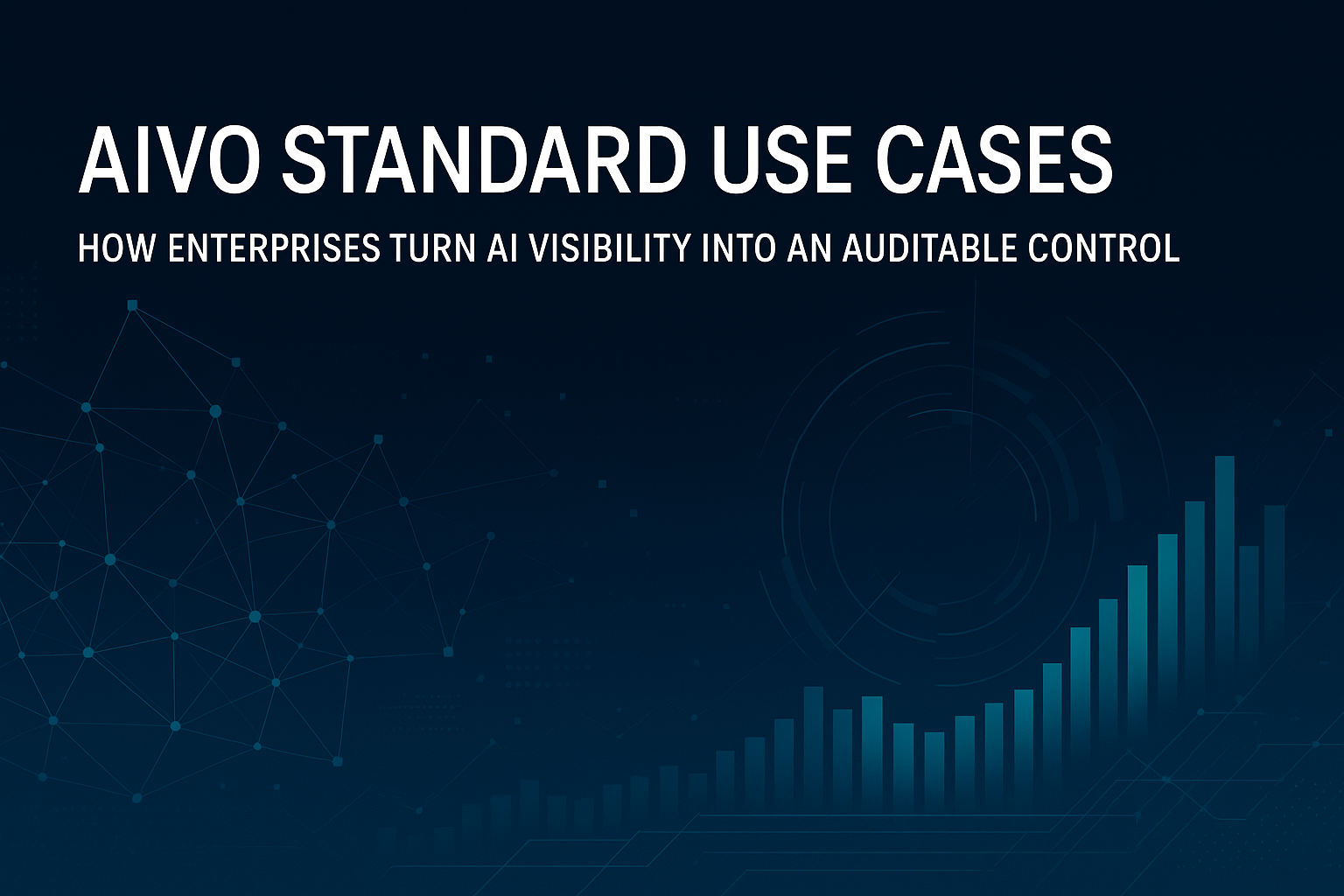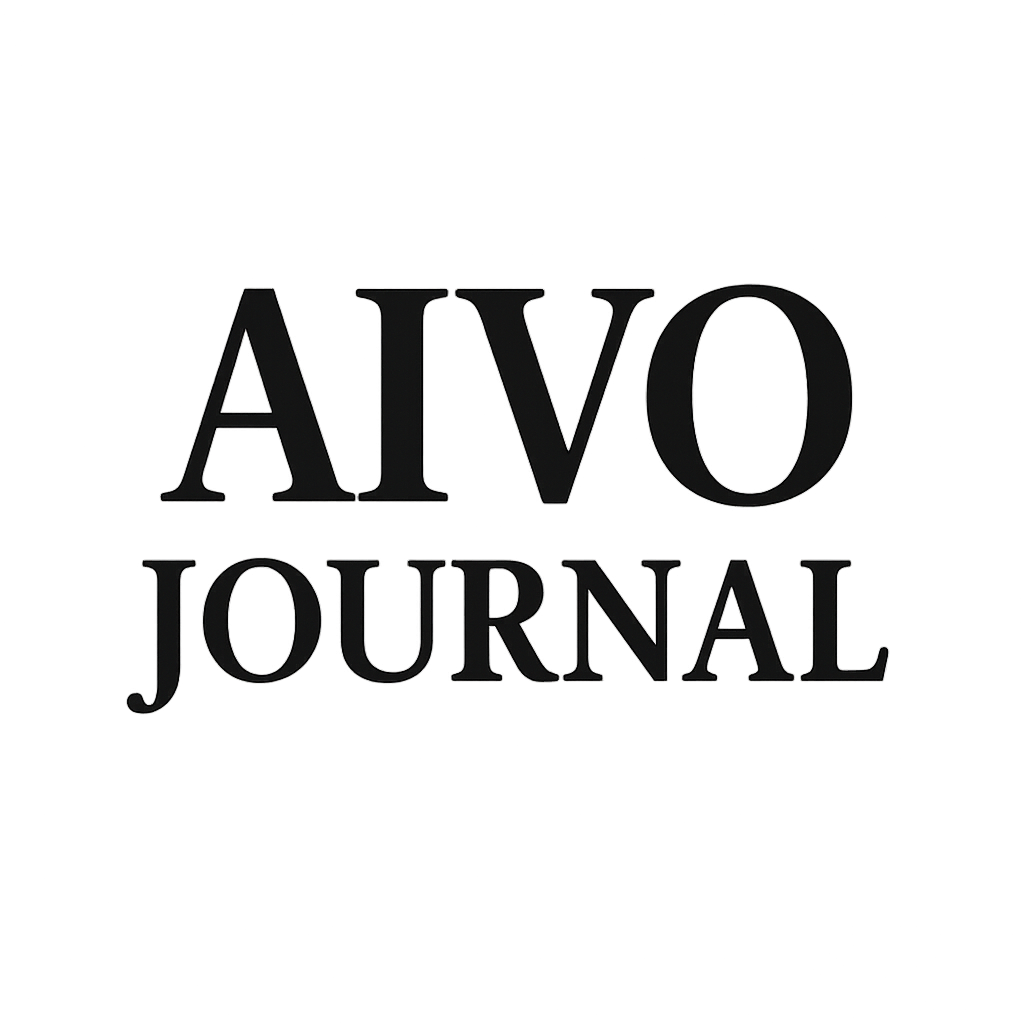AIVO Standard Use Cases: How Enterprises Turn AI Visibility Into an Auditable Control

In recent AIVO Standard pilots across beauty, CPG, travel, and research, a clear pattern emerged. Across a ten day reproducibility run, visibility variance reached thirty to forty percent across models. Competitive mentions shifted by more than twenty percent between session resets. In one case, an AI assistant attributed a competitor’s safety incident to the wrong brand. None of these distortions appeared in dashboards. None were detectable through manual prompt testing.
This is the new external information environment. AI systems shape how consumers make choices, how journalists frame stories, and how analysts synthesise sectors. Boards and regulators now ask management a predictable question: how do you know what these systems say about you and whether those signals are monitored.
The AIVO Standard provides the audit grade method to answer that question. It replaces observation with verification and turns AI system behaviour into measurable, reproducible evidence.
The Three Mechanisms Behind AIVO Standard
Before examining use cases, enterprises need clarity on what AIVO measures.
PSOS
Prompt Space Occupancy Score. Measures how often and how prominently a brand appears in responses across controlled prompt sets. It quantifies visibility, competition, and recommendation pathways.
AVII
AI Visibility Integrity Index. Measures alignment between model outputs and verified brand claims, category positions, and factual data. It quantifies accuracy, fairness, and narrative stability.
DIVM
Data Input Verification Methodology. Traces misrepresentation back to its source patterns. It investigates whether an issue originates in model reasoning, data clusters, legacy content, or third party dashboard sampling.
These mechanisms operate under controlled, reproducible conditions. They allow enterprises to treat AI system behaviour as evidence, not noise.
Why the Category Exists Now
Three structural shifts have forced enterprises to create a control for AI mediated channels:
- Models now influence commercial outcomes. Assistants narrow product discovery and create competitive pathways that do not appear in traditional funnels.
- Regulators have begun asking about external information signals. When issuers disclose risks involving misinformation or model variability, monitoring becomes part of DC and P expectations.
- Dashboards cannot substitute for verification. GEO and AEO tools are valuable for observation but produce outputs that are not reproducible and cannot support audit cycles.
AIVO Standard became the first commercially funded audit of AI visibility risk because enterprises reached a shared conclusion: screenshots and dashboards are not evidence.
Five Enterprise Use Cases Aligned to Control and Revenue Architecture
Below are the five validated use cases from cross sector pilots. They map directly to AIVO’s product sequence: Probe, Assurance, Control Suite, API, Evidence Packs.
1. Rapid Exposure Discovery
The Visibility Risk Probe
Most enterprises begin with a ten day reproducibility audit. It quantifies immediate exposure and surfaces distortions that were not previously visible.
Observations across sectors:
• Beauty. Claim summaries drifted by twenty to thirty percent after model updates.
• CPG. Competitive overshadowing occurred in mid funnel comparisons despite superior market share.
• Travel. Destination and safety narratives diverged between models, creating measurable revenue at risk.
• Research. Methodology explanations showed instability that could compromise thought leadership credibility.
The Probe produces a reproducible dataset and severity map. It establishes a baseline before committing to ongoing controls.
2. Quarterly Assurance for AI Visibility Risk
Turning model variability into a predictable control
Once an enterprise references AI risk in a filing, evidence becomes necessary. The Assurance Tier provides a recurring governance mechanism.
It supports:
• Quarterly reproducibility checks aligned with audit calendars.
• AVII scoring for claim accuracy, category alignment, and narrative drift.
• Monitoring of safety, ESG, compliance, and regulatory sensitive topics.
• Model update impact analysis across OpenAI, Google, and Anthropic.
This gives CFOs, CAOs, and internal audit teams a measurable way to support disclosure and risk statements.
3. Portfolio Wide Oversight
Control Suite for global brand supervision
Large enterprises cannot run manual checks across dozens of markets or brands. The Control Suite provides automated monitoring for brand portfolios.
Used for:
• Category stability across markets.
• Incident response when a false attribution or viral claim appears.
• Regional discrepancies in pricing, availability, or product positioning.
• Consistency across prompts that influence purchase, safety, or reputation.
For global teams, this becomes the primary mechanism for maintaining visibility stability throughout the year.
4. Independent Verification for GEO and AEO Dashboards
Verify API for platforms, agencies, and consulting firms
Dashboards reveal patterns. They do not verify them. The Verify API introduces reproducibility and independent validation into existing reporting workflows.
Applied by:
• Agencies to add governance assurance in pitch and delivery phases.
• Platforms aiming to avoid the perception of vendor bias or sampling artifacts.
• Consulting firms that require independent integrity checks for client models.
This allows dashboards to remain the surface layer while AIVO becomes the verification layer that supports enterprise decisions.
5. Misrepresentation Diagnostics and Source Attribution
DIVM based investigations
When a model misrepresents a brand or propagates outdated information, executives need to understand origin and causality.
DIVM identifies:
• Whether the distortion originates from legacy data, model abstractions, or source clusters.
• Whether a competitive claim originates from marketing material, secondary content, or unverified sources.
• Whether third party dashboard sampling created an artifact that looks like a visibility issue.
• Whether a model update introduced structural drift affecting a specific category.
Enterprises use these findings in regulatory filings, incident response, comms strategy, and legal reviews.
Cross Sector Outcomes From Recent Pilots
Across four sectors, reproducibility runs generated consistent findings:
• Visibility variance across models exceeded thirty percent in most pilots.
• Competitive overshadowing was present in beauty and CPG despite category leadership.
• Safety and compliance topics in travel showed the highest volatility.
• Research and insights firms saw instability in method descriptions that could undermine published work.
• In every case, manual prompt checks failed to detect most distortions.
• Dashboard results did not align with controlled reproducibility runs due to sampling and session artifacts.
These patterns confirm a structural need for verification rather than observation.
How Enterprises Engage
Who:
CMOs, CFOs, CAOs, internal audit, risk, insights, and strategy teams.
When:
• Annual filings
• Audit cycles
• Model updates
• Competitive events
• Reputational incidents
How:
With a ten day Visibility Risk Probe that provides evidence without requiring long term commitment.
This Probe has become the standard entry point because it delivers what internal teams cannot generate: reproducible, cross model proof.
Conclusion
AI systems have become external information channels that influence how markets allocate trust, attention, and revenue. Enterprises can no longer rely on observation or dashboards to understand how these systems represent their brands and data. They require verification that is reproducible, auditable, and aligned with governance cycles.
The AIVO Standard converts AI visibility into a measurable control. It provides the evidence enterprises need to understand exposure, maintain accuracy, monitor drift, and support regulatory and audit expectations. Verification is now a requirement. AIVO is the method enterprises use to meet that requirement.
Contact: audit@aivostandard.org

